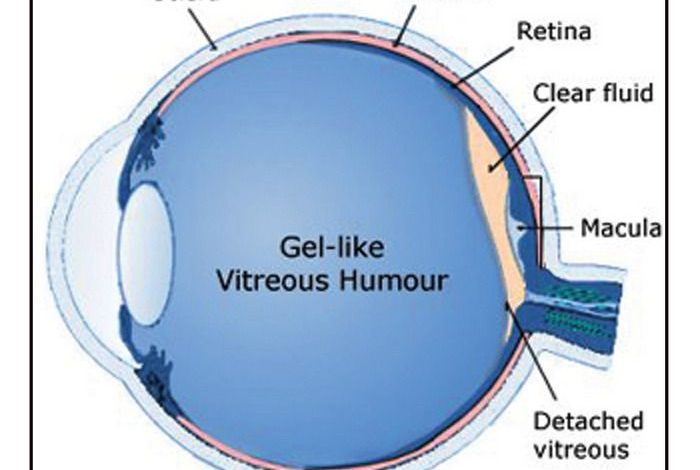

Eye Health
By Dr S.S. Gill
Our eye is filled with a firm gel like substance called vitreous humour. This gel maintains the eyeball shape and supports the retina. This vitreous gel that appears clear and transparent is actually made of up of fine fibres that are intertwined in a complex network. As with everything else, things can start changing as we age. The vitreous fibres can slowly pull away from the retina because the gel starts to shrink and become watery. This is called vitreous detachment. The eye doctors often refer to it as Posterior Vitreous Detachment or PVD. Thankfully, it is not sight threatening in most instances.
WHEN DOES PVD HAPPEN
PVD may occur anytime between the age of 50 years to 80 years. It is commonly seen earlier in the short sighted individuals. It may start in one eye and then gradually occur in the fellow eye.


The PVD is usually seen as floaters that appear as ‘cobwebs’ or dot-like specks that float around and is most noticeable when you look at a plain bright surface. The floaters dart around as you look at objects and sometimes may be mistaken for some flies hovering around. The floaters may be preceded or accompanied by a sensation of seeing bright flashes of lightning like streaks.
WHEN IS PVD A PROBLEM
In most cases, PVD is physiological and is not sight threatening. It will occur whether we like it or not and will wary in its intensity of symptoms from person to person. PVD is actually physiological and can be likened to ‘menopause of the eye’.
Rarely, the vitreous fibres may pull so strongly on the retina (nerve) of the eye and cause a tear or hole in the retina of the eye. Should this occur, you may see a sudden shower of floaters which may or may not be preceded by seeing flashes of ‘lightning streaks’. Sometimes the vitreous may pull on a blood vessel and cause a shower of red floaters (blood).
In any case, a tear in the retina may ultimately cause retinal detachment which can cause sight threatening vision problems. If you do experience a sudden large increase in floaters or an increase in flashes of light in your peripheral vision, you should have a proper eye examination done.
TREATMENT OF PVD
PVD does not need treatment because it is a harmless physiological occurrence, much like the eye undergoing ‘menopause’. It will happen to all of us at some stage or the other.
The only fear is when the process of liquefying of the vitreous gel pulls on the retina causing a tear or retinal bleed. In order to be sure that it is a natural physiological process, get a dilated pupil eye examination done should you experience any of these symptoms.


